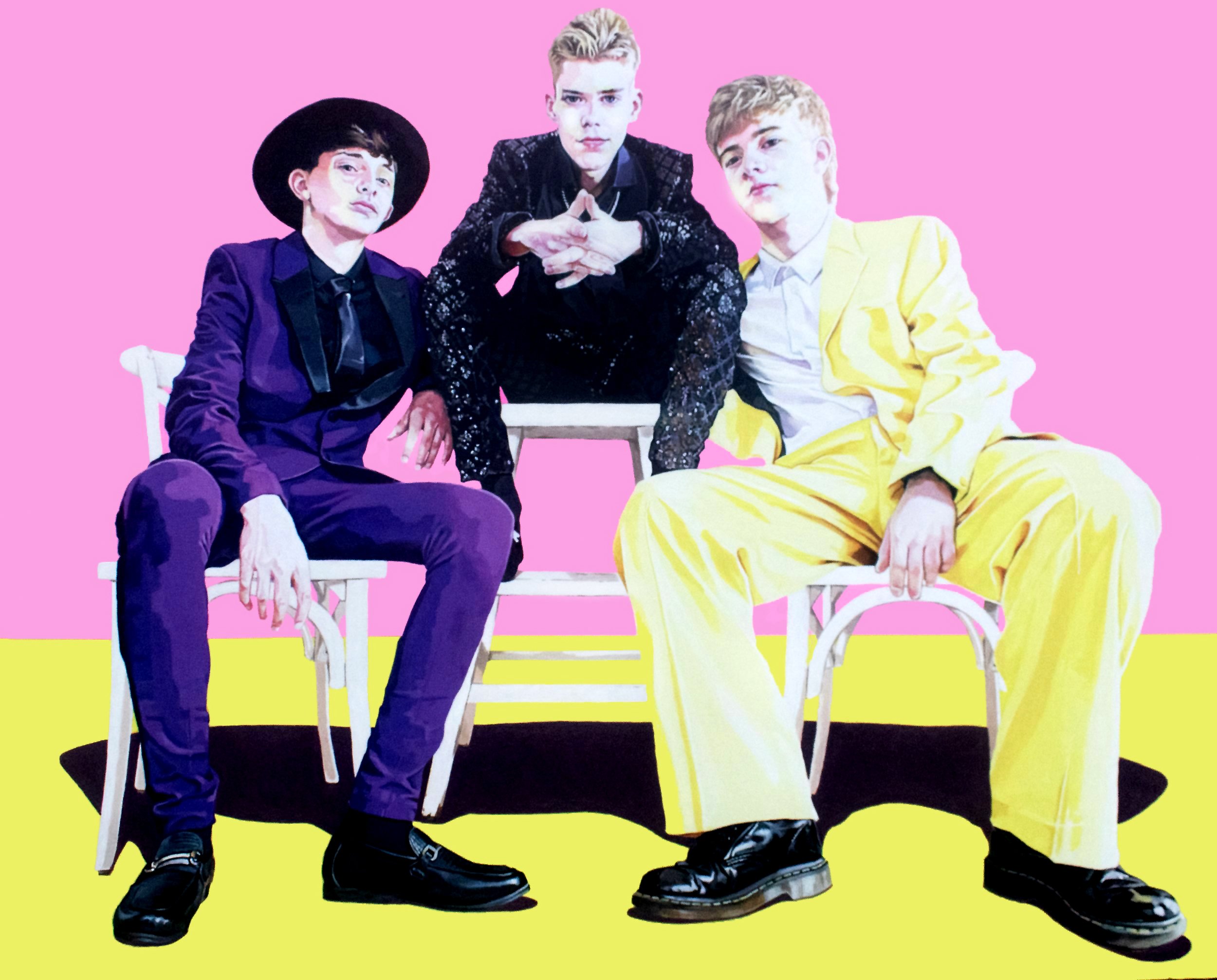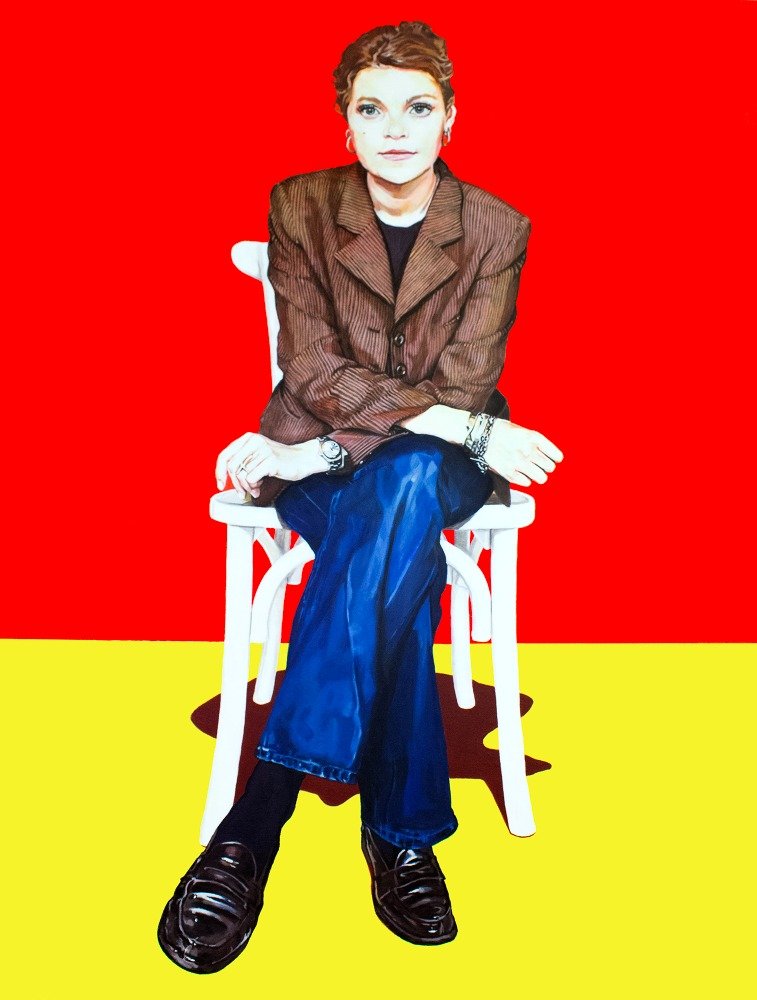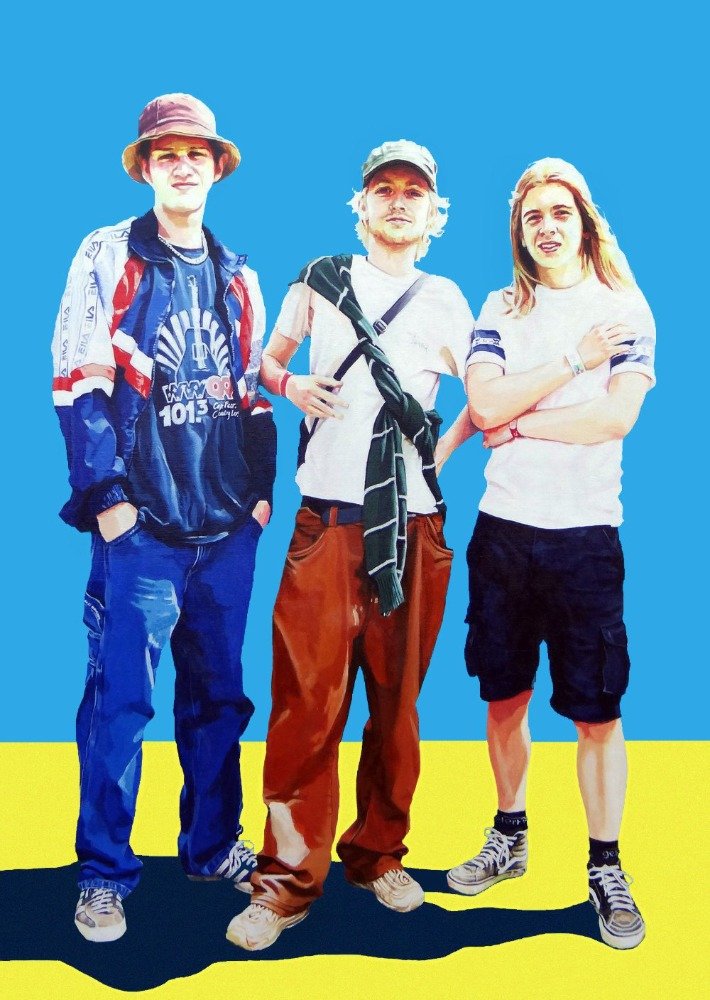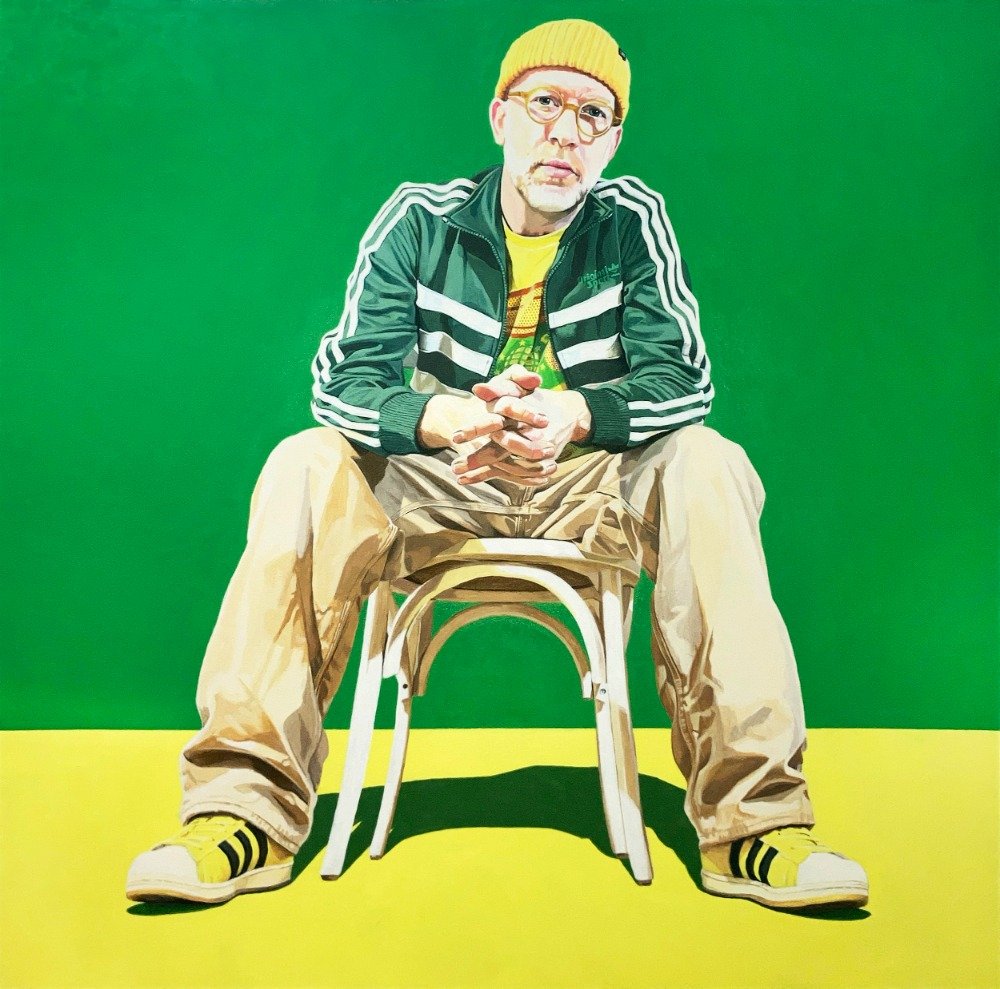ARTIST INTERVIEW: ROB COWAN
Rob Cowan
Please introduce yourself. You worked as an illustrator for 25 years and then transitioned into painting. What sparked this change?
As a young art student back in the early 90’s in the pre-digital era all disciplines used traditional media, my early career was creating illustrations by painting in my favoured medium of acrylics a process I loved. The illustration world changed dramatically with the introduction of first Photoshop, and then Illustrator and it was inevitable that I would need to transition to a digital way of working. As for many people, the pandemic put a hold on most of my commercial illustration work and gave me an opportunity to revaluate my practice. I made the decision to return to my original passion for figurative painting and move away from the world of illustration and project briefs. I spent the next 2 years experimenting in my studio trying to develop a style that combined my love for traditional techniques with the strong graphic style that had been my signature illustrative style for so long. My self-portrait which was selected for this years Ruth Borchard Self Portrait prize was my breakthrough piece and it’s this style that I now work in.
What fascinates you about the human figure? Which features are your favourite to paint?
I’m fascinated by human nature and how whenever we see another person we subconsciously create a narrative in our minds about their life stories, but from our own perspective. Therefore, figurative painting creates the opportunity for unlimited unique narratives from a single painting. I really enjoy painting hands, for some unknown reason they are something that I just find easier to paint!
You focus on the posture and clothing of your sitter, how does this help capture their character? How do you establish the final composition?
My belief is that when you ask someone to sit for a painting their choice of clothing is carefully considered and is a direct statement of how they would like the world to perceive them at that specific time in their lives. Whereas I believe their posture demonstrates their current mood and this would vary from day to day, even hour to hour. The final composition is mainly directed by the sitter as I don’t want to influence their posture, however, once I have the photos I then make my choice of the image to work from that I feel not only creates the strongest composition but also best delivers the sitters mood at that time.
Prom
Which sitter(s) have you enjoyed painting the most? Who would be your dream sitter to paint?
I honestly enjoy painting all my sitters as they all bring different challenges. If I did have had to pick one at the moment it would be the recent painting of Karolina as she really thought about her choice of clothing and even how she wanted sit, which has created a very powerful painting. My dream sitter? That’s an easy one, it would be the remarkable David Hockney! I have been a huge fan since first seeing his work as young art student at the Hayward Gallery, his cheeky personality and penchant for colourful clothes would be a dream to paint and of course a rebellious cigarette in hand!
Karolina
Who are your favourite artists? Have they influenced your own work?
As I mentioned above the inimitable David Hockney. Recently, I have been inspired by the work of Yinka Ilori and his use bold colours and simple shapes which have very much inspired my current series of paintings. My early influences were the works of Edward Hopper and Jeffrey Smart whose sense of quiet isolation in their paintings heavily influenced my early illustrative style and is something I still look to in my own figurative work.
Thinking about your most recent work, where did you start? Tell me about your creative process.
My process begins with choosing my sitter or sitters, I am currently working on a dual portrait of 2 young boys aged 2 and 4 which began with a photoshoot. I was fascinated to see how they would sit on the chairs undirected compared to my adult sitters. Next, I choose the photo I’m going to work from and using Photoshop remove the backgrounds and burn the photo out as I want them to have a strong vibrance. I work on large scale boards which I make myself and using the grid system I draw the composition onto it. First, I block in the bright coloured backgrounds so as I paint the figures I can keep the colours balanced, then I block in all the colours removing all of the white space. Painting the face is always first to ensure I have the likeness I want and then I work my way down the painting always finishing with the feet/shoes which now symbolises the end of a painting for me. When I have completed a painting I always clean my studio before starting the next just a little ritual that has developed over the years.
Sunday
What thoughts/ feelings would you like to evoke when someone sees your work? How does painting make you feel?
My paintings are a celebration of the sitter and they all aim to show strength and positivity, some may make you smile and some may not but all should give a strong sense of positive self. Without wanting to sound predictable painting is my meditation, I am by nature an energetic and fast ‘brained’ person and painting is the time when everything settles, the mind quiets and I step out of the chaos of life.
Out of all your work, which piece are you most proud of, and why?
There have been different ones over the years but all of them are connected by the same idea that they are works where I made a breakthrough in my artistic journey. So, at the moment my self portrait is definitely the piece I am currently most proud of as it has set me on my current path.
Rob - A Self-Portrait
Are you currently working on any new exciting projects?
I’m currently working a body of work for a solo show next year tied together by all the sitters sitting on the same white chair. I’m also currently in negotiations for working on some large-scale murals of my figurative work.
Why do you think art is important in society?
I see art as so much more than paintings in a gallery; it is something we all experience everyday unconsciously - the clothes we wear, the books we read, the films we watch, the posters on the bus stop, even the graffiti on the streets. All of these things enrich our lives!






